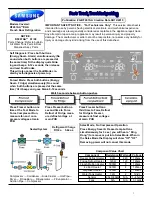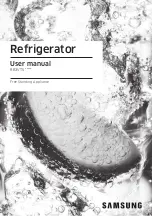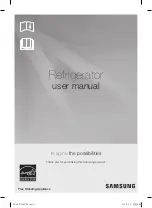
3
Location Requirements
To ensure proper ventilation for your refrigerator, allow for a
¹⁄₂
"
(1.25 cm) space at the top and behind the refrigerator. If your
refrigerator has an ice maker, allow extra space at the back for
the water line connections. When installing your refrigerator next
to a fixed wall, leave 2
¹⁄₂
" (6.3 cm) minimum on the hinge side
(some models require more) to allow for the door to swing open.
NOTE: It is recommended that you do not install the refrigerator
near an oven, radiator, or other heat source. Do not install the
refrigerator in a location where the temperature will fall below
55°F (13°C).
Electrical Requirements
Before you move your refrigerator into its final location, it is
important to make sure you have the proper electrical
connection.
Recommended Grounding Method
A 115 Volt, 60 Hz., AC only 15- or 20-amp fused, grounded
electrical supply is required. It is recommended that a separate
circuit serving only your refrigerator be provided. Use an outlet
that cannot be turned off by a switch. Do not use an extension
cord.
NOTE: Before performing any type of installation, cleaning, or
removing a light bulb, turn the refrigerator to OFF. Depending on
your model, turn the freezer control to the word OFF, or press the
Freezer down arrow touch pad until a dash (–) appears in both the
Freezer and Refrigerator displays as shown. Disconnect the
refrigerator from the electrical source. When you are finished,
reconnect the refrigerator to the electrical source and reset the
temperature controls to the desired setting. See “Using the
Controls.”
WARNING
Explosion Hazard
Keep flammable materials and vapors, such as
gasoline, away from refrigerator.
Failure to do so can result in death, explosion, or fire.
2
¹⁄₂
" (6.3 cm)
¹⁄₂
" (1.25 cm)
Electrical Shock Hazard
Plug into a grounded 3 prong outlet.
Do not remove ground prong.
Do not use an adapter.
Do not use an extension cord.
Failure to follow these instructions can result in death,
fire, or electrical shock.
WARNING




































